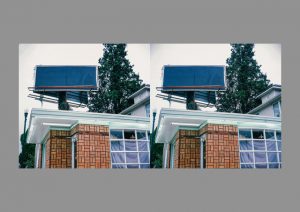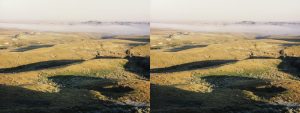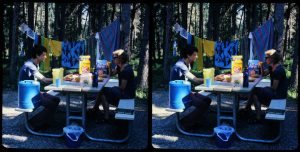F4 at 1-45 handheld cha-cha. I took the Fuji GA645w along my run and grabbed a few shots of the Newport Backbay near where I live. The tide swings can be dramatic near full moon. This one exposed lots of mud which was fun to look at. 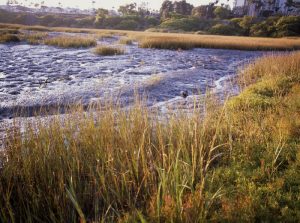
Category Archives: FolioA
Backbay at Sunset

F4 at 1-45 handheld cha-cha. Would’ve liked more dof. I took the Fuji GA645w along my run and grabbed a few shots of the Newport Backbay near where I live.
Vincent’s 6th Birthday
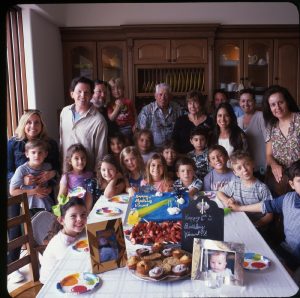
Vincent’s 6th birthday. Vincent is behind the helicopter with bro Kevin to right, and sisters Valentine & Emilie to his left. Compare to Vincent’s 12th birthday. 3DWorld 55mm lens, Fuji RDP III film.
COVID ROAD TRIP #2
Covid Road Trip #1 was submitted to loop d24 of the Dragon Folio.
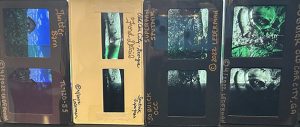
As soon as the borders to the US opened, I booked tickets for “The Presidents’ Heads”. My visit there took place in November of 2021. I met a lot of nice photographers at the Heads. A pair of them told me about this site that would eventually become COVID Road Trip #2 in April of 2022; “Old Car City” in White, Georgia. 4700 vehicles from 1918 to 1972 slowly being reclaimed by nature. It’s well-documented on YouTube.
“Twitter Barn” – Ever wonder where Elon Mollusk got the inspiration for his inventive re-naming of the Twitter platform? It was from this very barn, somewhere near the border of two States, on the way down to Georgia. TL-120-55, and some expired colour film. Could have been Provia 100F.
“Old Car City – Ford Detail” – I think this is an emblematic example of my work. Sputnik, Superpan 200.
“’50 Buick OCC” – I love the 1950 Buick. GM only made that grill style for one year. Sputnik, Superpan 200.
“’50 Buick Old Car City, GA” – A different 1950 Buick. Shallow depth of field, scratch on the film. Sputnik, Superpan 200.
Buick Veteran
Another car from the group of cars promoting a condo building, now under construction.
I had a roll of Velvia 100 and finally got a subject I thought would benefit.
Shot with my TL120.
Ready to Go (or something like that)
 To get closer to the cars in the pits, I bought a pit pass, a couple of races ago. I think this was Marco Andretti, but there is nothing to confirm it in the image. Only my memory.
To get closer to the cars in the pits, I bought a pit pass, a couple of races ago. I think this was Marco Andretti, but there is nothing to confirm it in the image. Only my memory.
Shot with Provia 100f in my TL120.
Packard Veteran
 At a sales office, for a new condominium near my house, they had a display of antique cars for over a year. They have been prepared for display using a new technique (to me) where they sand down the layers of paint to deliberately show them. It makes for an interesting photographic experience. I chose a sunny Saturday morning to take a few shots of them.
At a sales office, for a new condominium near my house, they had a display of antique cars for over a year. They have been prepared for display using a new technique (to me) where they sand down the layers of paint to deliberately show them. It makes for an interesting photographic experience. I chose a sunny Saturday morning to take a few shots of them.
After handing the folio to Steven Lederman, at a Tim Hortons in Scarborough, I saw the same cars, now parked to promote a different condo building.
Velvia 100 in my TL120.
Big Yellow Taxi
 The Toronto Police always have a display at the Toronto Indy, and most years, they have this 1957 Chevy Police car. They had this yellow colour until some time in the 80’s. I seem to remember this particular car dressed with eyebrows and blinking eyes, made from fiberglass, over the windshield, as Blinky the Police car. It was taken to schools and to community events.
The Toronto Police always have a display at the Toronto Indy, and most years, they have this 1957 Chevy Police car. They had this yellow colour until some time in the 80’s. I seem to remember this particular car dressed with eyebrows and blinking eyes, made from fiberglass, over the windshield, as Blinky the Police car. It was taken to schools and to community events.
Anyhow, the title “Big Yellow Taxi” is from the Joni Mitchel song, of the same name, which she wrote when she lived in Toronto (stop me if you have heard this before). The idea of the police car, which looks like a taxi cab, leaves the song making more sense, than if you didn’t know it was supposed to be a police car, taking away her “old man”.
Shot on Provia 100f in my TL120.
Scrutinizing Sharpness (Ian Andvaag A33)
Ruins Geneva Park, Switzerland
In the middle of the old town in Switzerland.
Guess Where?
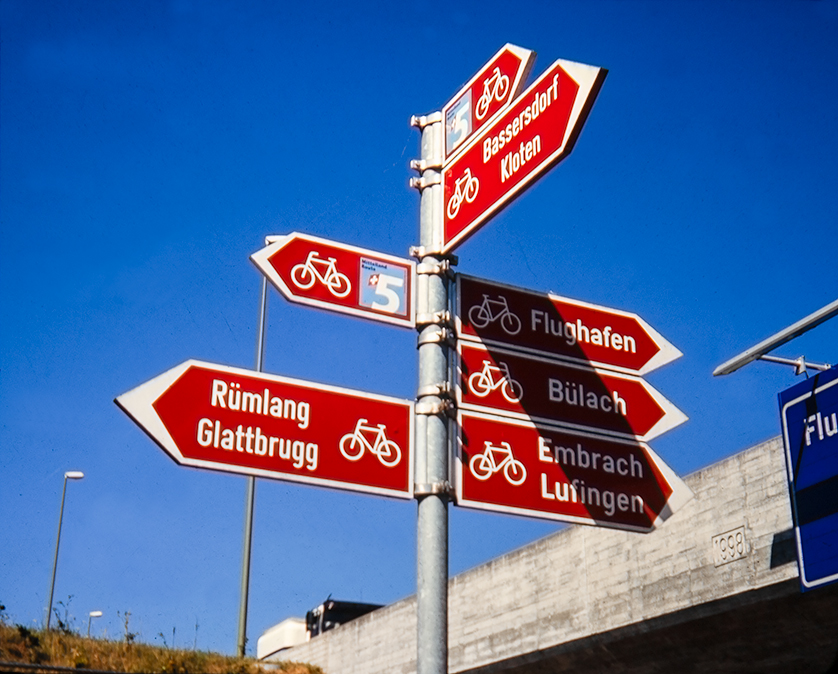 (Bike path beside the ?)
(Bike path beside the ?)
Blue in Green
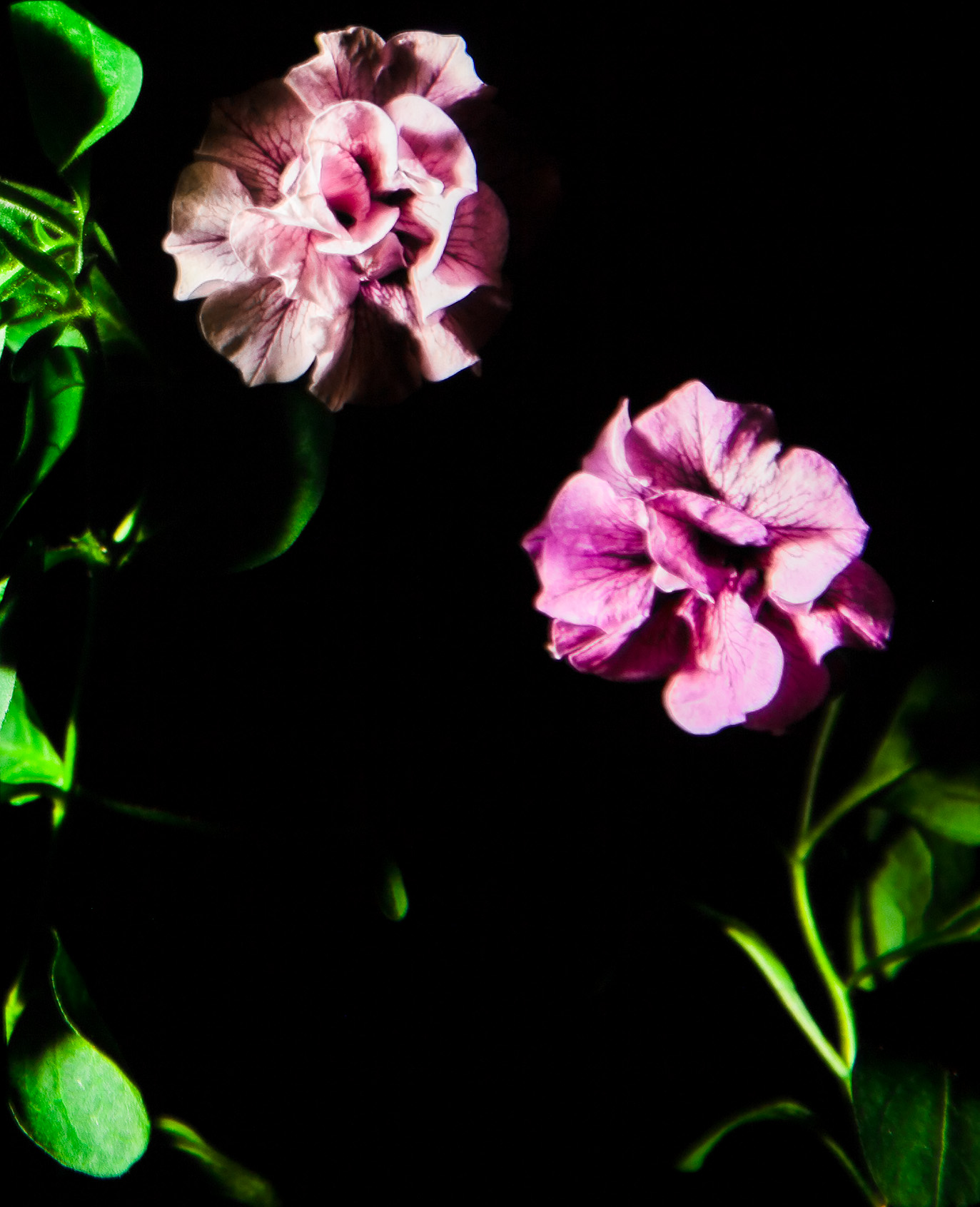 The title is from a fabulous Cool jazz composition and performance on Kinda Blue featuring Miles Davis, John Coltrane and Bill Evans.
The title is from a fabulous Cool jazz composition and performance on Kinda Blue featuring Miles Davis, John Coltrane and Bill Evans.
Mama C330 twin lens reflex with 65 mm f 3.5 Sekor lens
Alpine Meadow, Sawtooth Mountains
During the convention in Boise, Idaho.
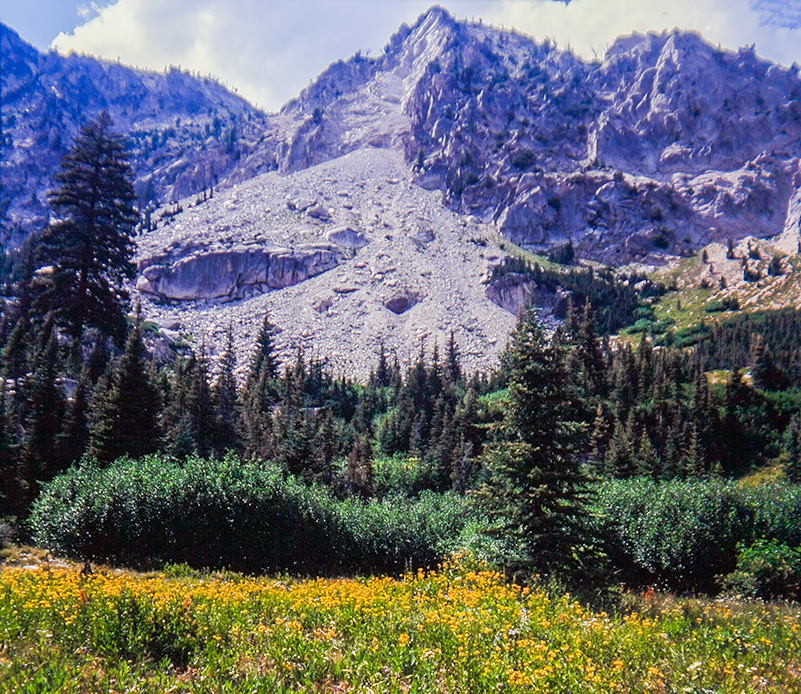
Poetry By Dead Men
In “full confession” mode, I’m here to tell you I have nothing new to offer. I have not made a single image since the Before Times. That’s more than three years without loading the camera, finding the scenes, composing the image, and tripping the shutter. It is a dissatisfying mental place to be, but I just haven’t wanted to create any images.
So from this melancholic zone, I’m reaching into my box of treasures to offer you some images from those whose work has inspired me, and from whom we will be seeing no new images. I’ll try to have some new images for y’all next time around. Continue reading
I’m Moving to Main Street
